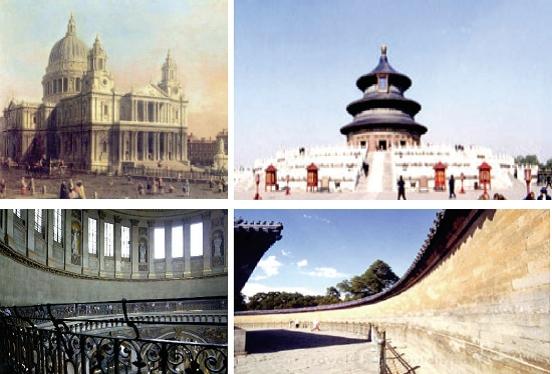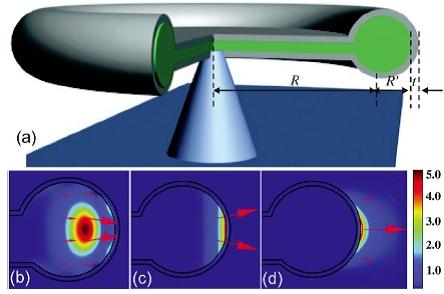Peking University, Oct. 11, 2010: An exterior whispering gallery mode was found in the system of metal coated microtoroid for the first time by Professor Gong Qihuang and researcher Xiao Yunfeng in the research group of Femtosecond Photophysics and Mesoscopic Optics of Peking Univerisity. The mode is of high quality factors as well as good light field locality. Exterior whispering gallery modes have a bright application prospect in the fields such as low threshold microflow laser and Cavity-QED(cavity quantum electrodynamics) and biosensors which are highly sensitive.
The study was published in Physical Review Letters, the top publication in the field of physics, on October 8.( Physical Review Letters 105, 153902 (2010), Yun-Feng Xiao, Chang-Ling Zou, Bei-Bei Li, Yan Li, Chun-Hua Dong, Zheng-Fu Han, and Qihuang Gong) The research was funded by the "Innovative Research Group" project of the National Natural Science Foundation of China and National Program on Key Basic Research Project (973 Program).
The study on exterior whispering gallery modes can be traced back to a century ago when the great British scientist Lord Rayleigh studied the propagation of sound in the bent corridor of St Paul s Cathedral ( figure 1, left). He found that two people whispering far away at the other end of the corridor could be clearly heard . So this mode of sound propagation is known as whispering gallery mode . In fact, a similar phenomenon exists in Echo Wall of Temple of Heaven in Beijing( figure 1, right). As the scale of physical devices made by scientists is getting smaller and smaller, the research on whispering gallery modes has been gradually extended to the microwave field. Recent research has been focusing on whispering gallery modes in light wave. Because of its high quality factors and small mode volume, whispering gallery modes can not only perform as a platform for basic scientific research, such as quantum optics, cavity quantum electrodynamics and quantum information processing, but also be widely used in many important nano- and micro-photonics devices, such as narrow band filters, low threshold micro laser and highly sensitive biosensors.

Figure 1, left: the corridor of St Paul s Cathedral; right: Echo Wall of Temple of Heaven in Beijing
Despite the great success of research on whispering gallery mode in optical microcavity, the characteristic that the energy of this mode is confined mainly to the chamber limits its application in certain key fields. There was consensus that high quality factor whispering gallery modes could not be distributed outside the chamber due to the high radiation loss.
However, Xiao Yunfeng, a researcher of Peking University, and Professor Gong Qihuang studied the metal coated microtoroid system systematically (see figure 2 (a)). Not only did they find traditional whispering gallery mode and interior plasmon whispering gallery mode in the system (see figure 2 (b) and figure 2(c) ), but also gave a theoretical proof for an exterior plasmon whispering gallery mode for the first time (see figure 2 (d) ).
By making use of the distinct characteristic of surface plasmonics, the exterior plasmon whispering gallery mode has high quality factors as well as high light field locality. Besides, they proved that this exterior mode could be effectively activated by an optical fiber. Under certain conditions, interior and exterior surface whispering gallery modes can achieve mutual coupling, creating the interesting phenomenon of anti-crossing and forming a antisymmetric mode with factors of higher quality.

Figure 2, (a) the diagram of metal coated microtoroid;(b)-(d): traditional whispering gallery mode, interior plasmon whispering gallery mode and exterior plasmon whispering gallery mode supported by the system
Edited by: Zhang Chunlan
Translated by: Ma Xiao
Source: PKU News
Related News
Photos
More>>history
Traditions
- PKUSZ Holds 1st Field Day
- International Conference on China Studies and Oversea Chinese Books held at PKU
- Inaugural Meeting of Joint Research Center for Navigation Satellite held at PKU
- Latest Discovery of Prof. Wang Enge's Team Published in Physical Review Letters
- National Wetland Conservation and Restoration Technology Center Set up at PKU





